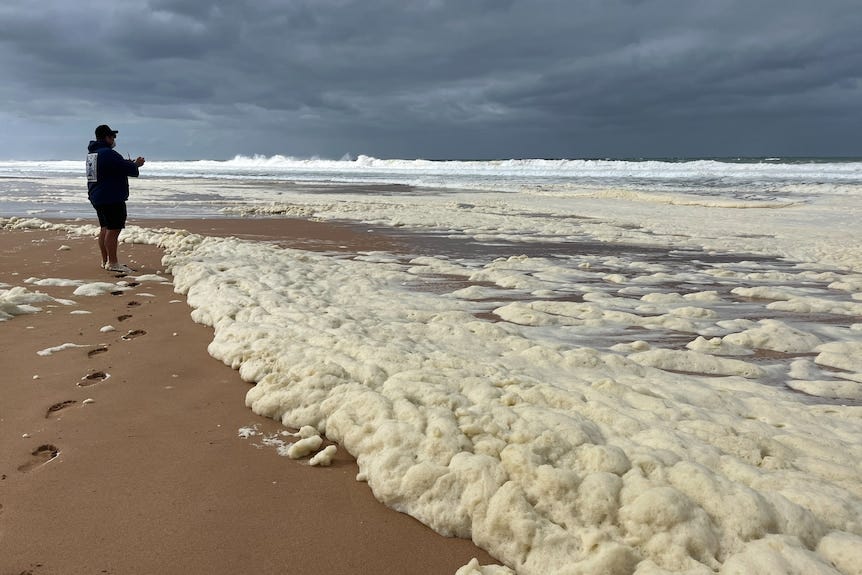Harmful algae bloom in South Australia
Death of tens of thousands of fish, struggling fishermen and what this means for health
Tens of thousands of fish, including sharks and stingrays, have died off South Australia's Yorke Peninsula following a harmful algae bloom that emerged two weeks ago. The species responsible - Karenia mikimotoi - was first detected in March.
What is a Toxic Algae Bloom?
A toxic algal bloom occurs when algae grow excessively in the ocean, producing conditions that are harmful to marine life.
In this case, the bloom is caused by Karenia mikimotoi, a species known to kill fish and invertebrates by releasing substances that damage gills and deplete oxygen levels.
In this case, the bloom does not cause long-term harm to humans. However, it does cause short-term skin, eye and lung irritation, coughing and shortness of breath in humans for several hours following exposure.
What Causes Toxic Algae Blooms?
The causes are complex but generally include environmental conditions that support algal growth:
Rising sea temperatures and “marine heatwaves”
Floods which wash excess nutrients into the ocean
Unprecedented currents which bring nutrient-rich deep water to the surface
These conditions are becoming more common due to climate change.
Health Effects
We often think of health in physical terms, but harmful algal blooms affect multiple dimensions of health, including mental, community, cultural, and environmental wellbeing.
To illustrate this, health impacts can be broken down into direct and indirect effects:
Direct health effects of the toxic algae bloom
Skin, eye and lung irritation, typically lasting several hours
Indirect health effects
Diet and nutrition - reduced access to fresh seafood may shift diets toward less healthy alternatives
Physical activity and recreation - dangerous swimming conditions limits safe swimming and beach use
Livelihoods and local economies - loss of income for fishers and tourism operators can drive debt and poverty in coastal towns
Culture, identity and mental health - many communities, connection to the ocean and marine species is deeply tied to identity, cultural practice, and emotional well-being
"I honestly do not know how many years this could take to get a calamari fishery back in Gulf St Vincent — it's pretty well non-existent now." Mr Pennington and fisher from Ardossan, interviewed by ABC News.
Climate Change Connection
Climate change drives conditions which favours the overgrowth of harmful algae. Such changes include:
Rising water temperatures
Increased CO2 levels in water and atmosphere
Changes in precipitation patterns
As the climate continues to warm, we can expect more frequent and intense blooms.
SA Government Response
$500,000 initial relief package for affected fishers
Public warnings to avoid swimming or surfing in discoloured water, foam or areas with dead marine life
Health and safety advice: do not to touch or eat dead or dying fish, shellfish or marine wildlife
Bottom line
Climate change is already affecting our health in diverse and far-reaching ways. We need to continue investing in a combination of mitigation and adaptation measures to allow humans and animals to continue to live in a healthy environment.
Mitigation: Reducing emissions to limit future warming
Adaptation: Strengthening our systems and infrastructure to cope with a changing climate
In this case, adaptation might include:
Improved coastal monitoring systems to detect and respond to blooms early
Stronger regulations on stormwater and agricultural runoff to reduce nutrient loading into coastal waters



